#rattan singapore
Text
Eco friendly rattan sofa can help Singapore be better
Reduced Carbon Footprint: Rattan furniture typically has a lower carbon footprint compared to furniture made from synthetic materials or hardwoods. Choosing eco-friendly rattan sofas helps to minimize carbon emissions associated with furniture production
Incorporating eco-friendly rattan sofas can contribute positively to Singapore’s sustainability efforts in several ways:
Use of Sustainable Materials: Rattan is a renewable and biodegradable material that grows abundantly in Southeast Asia, including Singapore. Using rattan for furniture production reduces reliance on non-renewable resources and promotes sustainable harvesting…

View On WordPress
#Art#custom made sofa#interior design#rattan#Rattan Australia#rattan bohemia style#rattan ideas#rattan outdoor#rattan singapore#singapore#Singapore expats
0 notes
Text
Singapore Coffee | Raffles Hotel Singapore | 2022 November
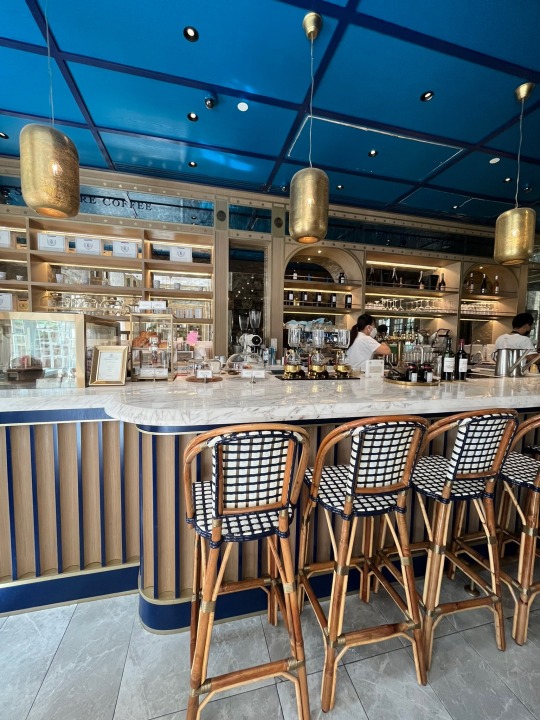

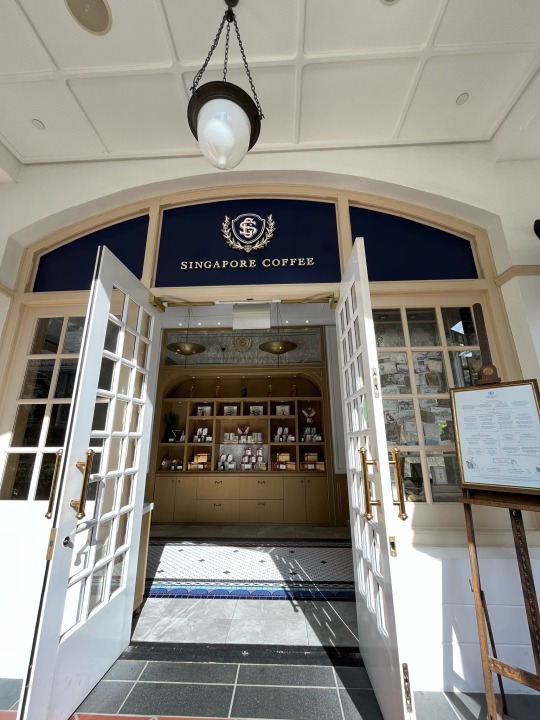
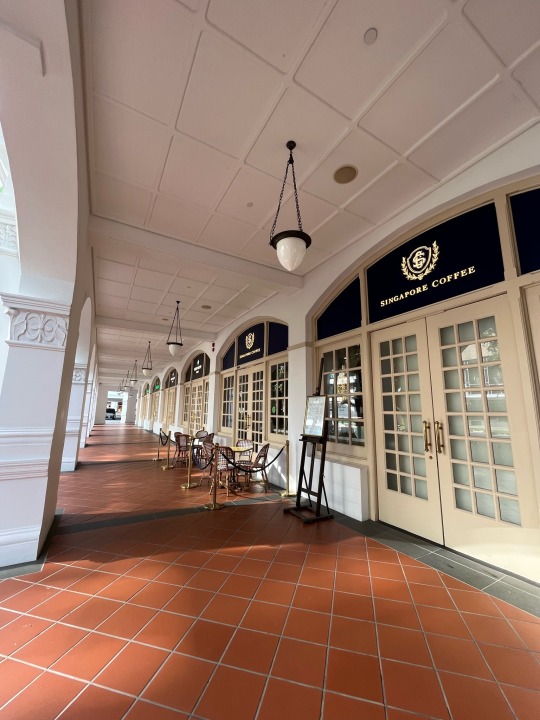
#raffles#hotel#accor#singapore#coffee#singapore coffee#hotels#cafe#mugs#rattan#chairs#furniture#dining#casual#breakfast#brunch#fan#handmade#drinks#snacks#pastry#local#beans#glass#ambience#vibe
80 notes
·
View notes
Text
Rattan Elegance: Discover Timeless Allure in Singaporean Rattan Furniture
Experience the enchantment of Rattan Elegance, where we proudly unveil the timeless allure of Singaporean rattan furniture. Our curated collection showcases the perfect fusion of tradition and modernity, offering exquisite rattan chairs in Singapore that redefine elegance and comfort. Crafted with precision and dedication, each piece reflects the rich heritage of rattan craftsmanship while seamlessly integrating into contemporary lifestyles. Elevate your space with the sophistication of our rattan furniture, where enduring quality meets aesthetic excellence. Explore the artistry of rattan chairs in Singapore and transform your living spaces with unparalleled style and grace
0 notes
Text
Acclaimed Dutch architect Rem Koolhaas described it a masterpiece of experimental architecture. Singaporeans were drawn to it for its atmosphere and the abundance of cheap Thai food. For Thais living in Singapore, it was a home away from home.
Golden Mile Complex, also known as Little Thailand, was sold in 2021 to a consortium which will redevelop the building. As it has been gazetted as a conserved building by the Urban Redevelopment Authority, its physical structure is likely to be preserved. However, the same cannot be said for its unique character. Its tenants – a mix of inexpensive Thai eateries, seedy bars and tiny shops selling Thai perishables – were given until May 2023 to move out. Now that they have dispersed, they are unlikely to return.
As an era in the building’s history ends, it is timely to look back at its history, which goes back five decades.
Building Golden Mile Complex
Officially opened on 28 January 1972, Golden Mile Complex was an urban renewal project by the government to “redevelop and rejuvenate the slum-ridden areas in the Singapore city centre”.1 In the 1960s, the site was home to squatter settlements, small-time furniture and rattan makers, and the Kampong Glam Community Centre.2
In June 1967, then Minister for Law and National Development E.W. Barker announced that the area would be one of 14 urban redevelopment projects which would be transformed – resulting in modern skyscrapers, luxury apartments, hotels and shops – to give rise to a “new look Singapore”. These projects would involve the participation of private enterprises.3
Singapura Developments won the tender for the three-acre site that would eventually host Golden Mile Complex with a proposal for a building by the architecture firm Design Partnership (now known as DP Architects), which was then helmed by William S.W. Lim, Tay Kheng Soon and Koh Seow Chuan. The three men had convinced Singapura Developments to bid for the site in May 1969, offering the unusual proposition for a single building that would integrate shops, offices and apartments. Although the concept differed sharply from the government’s original proposal for luxury apartments on the plot, Lim, Tay and another architect, Gan Eng Oon, proved their design could work with an economic feasibility study that included precisely calculated land and sale prices.4
The all-in-one design of Golden Mile Complex marked a significant shift from how city planners in Singapore then traditionally segregated areas into different zones for “live, work, play”. In fact, it embodied Lim’s vision for “megastructures” that would contain all the functions of a city within a building, which he believed to be the future of Asian cities.
“We must reject outdated planning principles that seek to segregate man’s activities into arbitrary zones, no matter how attractive it may look in ordered squares on a land use map. We must reject arbitrary standards laid down that limit the intensive use of land,” said Lim and Tay as part of an essay for the Singapore Planning and Urban Research Group that was published in Asia Magazine in 1966.5 This vision was realised in Golden Mile Complex: a concrete megastructure that became one of the earliest mixed-use developments in Singapore and Asia.6
In January 1970, Singapura Developments began marketing the property and declared that “The Golden Mile Race Is On”. All 64 apartments were snapped up within a month, and most of the offices and shops were sold by the time building works commenced in May 1970.7
The building was originally named Woh Hup Complex, after the parent company of Singapura Developments. Rising 16 storeys, the edifice was designed in the Brutalist style popular in Europe and North America from the 1950s to the 1970s.8 It was constructed in a stepped terraced design held up by two end pillars that each adorned a star logo by Singapore’s leading graphic designer William Lee.9 Such a facade maximised waterfront views for the 64 apartments and maisonette penthouses spread across the topmost seven floors.
The next six floors housed 210 offices and studios to complete the tower that was seemingly pried apart in the middle. This sheltered a residential play deck facing Beach Road on the 10th storey while letting in natural light and ventilation into the office corridors and a three-storey podium. The latter comprised 360 shops that sat atop a basement carpark for 550 vehicles.
Completing the facilities was a four-storey residential car park at one end of the building that was topped with an open-air swimming pool overlooking the former Crawford Park. All these different functions were connected by corridors, including a “street” that ran through the podium of shops. The result was an interiorised environment designed to “encourage human interaction and intensify public life”.10
A Hub of Modernity
Woh Hup Complex was part of a pioneering wave of shopping centres to open in Singapore in the early 1970s, along with People’s Park Complex in Chinatown and Tanglin Shopping Centre and Specialists’ Centre in the Orchard Road area.
Like many of the complexes built then, Woh Hup Complex was also a strata-titled development. This form of property ownership was introduced by the government in 1968 to allow individual owners to have a share of a land. It allowed property developers to quickly recoup their investment by tapping on a pool of buyers, and also enabled individuals to participate in the on-going modernisation of Singapore.11
Woh Hup Complex offered shop lots in various sizes, starting from a 144-square-foot lot for just $16,500.12 The prices were lower compared to other shopping centres because the complex was at the city centre fringe. But its developer remained bullish about its prospects. “We offer easy parking, no frayed nerves while coming up here,” said T.M. Yong, a director at Singapura Developments. “Our shop owners will most probably be able to offer goods at lower prices.”13 The earliest tenants in the complex were an eclectic mix of shoe retailers, beauty salons, photo studios, furniture suppliers, travel agents, eateries, restaurants and nightclubs.14
As one of the first buildings to offer modern office spaces in Singapore, Woh Hup Complex attracted many businesses too. Singapura Developments and its parent company Woh Hup as well as Design Partnership set up offices in the building.15 The complex also became known for its many architecture and engineering firms, including OD Architects who were conceiving the masterplan for the National University of Singapore’s Kent Ridge campus, Cardew and Rider Engineers who were working with Design Partnership on Marina Square, and several engineering firms involved in the construction of Singapore’s up-and-coming Mass Rapid Transit network.16
But a decade after the complex opened, there were complaints of interrupted water supply, faulty air-conditioning and lifts, leaking roofs, rotting ceiling boards, rubbish piling up along the corridors, and broken or missing lights.17 These were reported after Woh Hup exited the property market and sold Singapura Developments along with its properties to City Developments in 1981.18 Woh Hup Complex was then renamed Golden Mile Complex.
The Rise of “Little Thailand”
By the mid-1980s, many of the building professionals had moved their offices elsewhere and Golden Mile Complex became better known as the haunt of foreign construction workers, specifically those from Thailand.
After work, particularly on Sundays and public holidays, homesick Thai workers thronged Golden Mile Complex to drink Singha beer, catch up on news back home by reading Thai newspapers, and listen to Thai music on cassette tapes. The draw for most was the various eateries selling Thai food at reasonable prices on the ground floor. Not only did these establishments serve food just like home, they served them on tables and chairs “scattered in front of food shops” or along the corridors and the concourse – just “[like] a street corner in Haadyai or Bangkok”.19
Golden Mile Complex was also the terminal for tour buses plying the Singapore-Haadyai route operated by travel agencies located in the complex and the neighbouring Golden Mile Tower. As the Thai clientele in the complex grew, it became referred to as “Little Bangkok” and “Little Thailand”.20 The Thai community injected new life into what was then a rapidly ageing Golden Mile Complex, and attracted even more shops to serve the community. A tailor in the complex reportedly expanded from one shop to seven to sell all things Thai, while a “100% genuine Thai style” disco named Pattaya opened in 1988 on the second floor.21 There was even a 50-seat “cinema” that screened kick-boxing specials and Thai features at $3 a ticket.22
In 1986, the Straits Times reported that Golden Mile Complex “would be a ghost town but for the office workers, who appear at lunch time, and the Thais, who have made it their haunt”. Dorothy, a secretary working in an architecture firm in the complex, told the Straits Times: “Before the Thais started coming here about four years ago, the place was very dead. Now, it’s sometimes so noisy that you get a headache.” Because fights would occasionally break out, she was not a fan of the place. “For Thai food, I’d rather go to Joo Chiat,” she added.23 Her sentiments were shared by many other Singaporeans who avoided Golden Mile Complex on Sundays.
As one shopowner explained: “Our Sunday business has been hit. Some customers stay away because of the Thai character of the place.” A food stall operator added: “The Thais linger for hours, drinking beer and eating their favourite beef noodles. Sometimes, they fight among themselves over a few drinks.”24
It did not help that migrant workers and the complex were often in the news for the wrong reasons. As part of the government’s massive crackdown on illegal migrants in March 1989, 370 suspected Thai undocumented workers at Golden Mile Complex were nabbed in a single operation.25
National Icon or National Disgrace?
In 1994, Rem Koolhaas visited Singapore and marvelled at its development in his seminal essay “Singapore Songlines”. He was particularly captivated by Golden Mile Complex and People’s Park Complex, which he praised as “‘masterpieces’ of experimental architecture/urbanism”.26 On his next visit to Singapore in 2005, Koolhaas said: “These buildings were not intended to be landmarks but became landmarks. Yesterday, I went to see all the buildings again, and they are absolutely stunning, radical and amazing.”27
While Koolhaas and many in the architecture fraternity saw Golden Mile Complex as the future, most Singaporeans regarded it as a relic of the past. By the 1990s, a slew of new shopping centres had sprung up near the complex, including Raffles City, Bugis Junction, Suntec City, Millenia Walk and Marina Square. Many felt Golden Mile Complex and other strata-title malls were simply no match for these single-owner developments that could plan a more attractive retail mix to woo shoppers.28 A 1996 article in the Straits Times assessed that Golden Mile Complex was unlikely to change because of its ownership structure and should simply “fill [the] low-end gap”.29
The disconnect between Golden Mile Complex’s celebrated architecture and its decline came to a head in 2006. During a parliamentary session on 6 March, then Nominated Member of Parliament Ivan Png called it a “vertical slum”. He was particularly irked by how each individual owner had added “extensions, zinc sheets, patched floors, glass, all without any regard for other owners and without any regard for national welfare”, resulting in “a terrible eyesore and a national disgrace”.
“The appearance of Golden Mile Complex appals me whenever I drive along Nicoll Highway. It must create a terrible impression on foreign visitors arriving from the airport. How can we be a world-class city in a garden? The Golden Mile Complex is just the most extreme of how a strata-title property can deteriorate,” he said.30
This came just after Golden Mile Complex was featured in Singapore 1:1 – City, a publication showcasing significant architecture and urban design in the city-state.31 “That’s a real joke!” said Png. “Can you imagine if that thing was standing on the Singapore River between OCBC Building and UOB Centre?” He added: “It just gives me goosebumps. It’s so close to the city, yet it’s so unlike Singapore – orderly, tidy, everything neat. It’ll drag us down.”32
Not everyone agreed with his criticism. Retiree Evelyn Ong, who moved into the complex in 2005, immediately booked her 11-storey apartment after seeing the breathtaking views. She said: “Once I stepped in and saw the view, I said book, book, must book.” She bought her 1,000-square-foot apartment for about $310,000, and spent about $70,000 on renovations to make it look like a holiday resort. “I think I’m very lucky. It’s so difficult to find such a nice view. Every day, I sit here (at my balcony) and I can see the beautiful lights at night.” She agreed that more could be done to spruce up the building though.33
The local architecture fraternity pushed back against Png’s comments. In August 2006, Calvin Low, a trained architect and journalist, kickstarted a monthly series on local architecture in the Straits Times and titled his first article “Golden Mile Still Shines”.
“The architectural thesis that GMC [Golden Mile Complex] represented was revolutionary – not just for Singapore but globally, too. It stood as a concrete realisation of the architects’ vision of a futuristic city-within-a-building that offered a whole, new integrated way of living in a modern, tropical, urban Asian context,” he wrote.34
In November the same year, a collective of architects, designers and artists known as FARM launched “Save the Modern Building Series”, a lineup of talks to raise awareness of the complex and other pioneering modern buildings such as Pearl Bank Apartments.35 In November 2007, the inaugural architecture festival, Singapore ArchiFest 07 – organised by the Singapore Institute of Architects to celebrate Singapore’s built environment – featured tours of the complex conducted by architecture students from the National University of Singapore.36
A Landmark Saved, a Community Lost
In August 2018, news broke that more than 80 percent of the owners of units in the complex had agreed to put the building up for an en bloc sale at $800 million. This came hot on the heels of the sale of another modernist icon, Pearl Bank Apartments,37 just six months earlier. Heritage and architectural experts were dismayed at the news. “It will be a tragedy and a great loss to Singapore if the en-bloc sale results in the demolition and redevelopment of such an important urban landmark with such high architectural and social significance,” said heritage conservation expert Ho Weng Hin.38
Although architects and academics petitioned for Golden Mile Complex to be conserved, residents were in two minds about it. The complex’s long-time residents confessed they could no longer keep up with the building’s maintenance needs. “The problem is that it’s an old building, and when it rains, the water seeps through some of the walls. The building has water-proofing issues,” said Ponno Kalastree, who had lived and worked there since 1989. He was among those who had voted for the sale and was planning to downgrade to a Housing and Development Board flat, but admitted that he would miss the place.39
To the surprise of many, the Urban Redevelopment Authority (URA) told the Business Times in October 2018 that they have “assessed the building to have heritage value, and is in the process of engaging the stakeholders to explore options to facilitate conservation”. “Modern architecture, dating from our recent past, is a significant aspect of our built heritage, and we have selectively conserved a number of such buildings. Where there is strong support and merits for conservation, we will work with the relevant stakeholders to facilitate the process,” said the URA. This meant that the existing building could be retained while a new block would be added next to it.40
The tender closed in January the following year without any offer, and a second tender launched just two months later with the same terms and price tag of $800 million suffered the same fate.41
Almost one year after the two failed collective sales, the URA announced in October 2020 that it was officially proposing Golden Mile Complex to be conserved in light of its historical and architectural significance.42 When it was gazetted a year later in October 2021, Golden Mile Complex became the “first modern, large-scale strata-titled development to be conserved in Singapore”.43
The owners relaunched an en bloc sale in December that year at the same price of $800 million.44 This time, the sale was successful and the complex was sold in May 2022 to a consortium comprising Far East Organization, Sino Land and Perennial Holdings. Although their bid was $100 million lower than the reserve price, the owners agreed to the sale within “a record time of 15 days”.45
At the point of publishing this essay, the new owners have yet to reveal how they plan to redevelop Golden Mile Complex, though it is unlikely that any of the former tenants will return. The battle to conserve Golden Mile Complex has, ironically, cost the community who kept it alive when others moved on to swankier new buildings. But all, however, is not lost. The redevelopment of Golden Mile Complex could serve as a model for how other similar buildings in Singapore can be conserved and enjoy a new lease of life for the future.
9 notes
·
View notes
Text


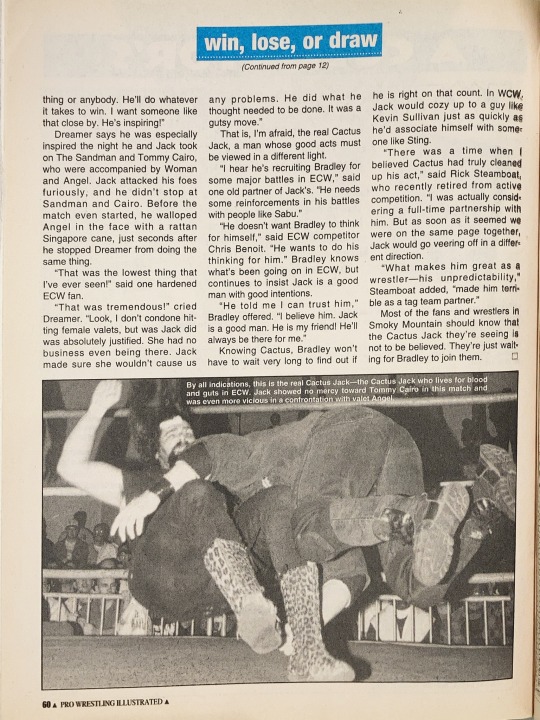
Pro Wrestling Illustrated : May 1995
win, lose, or draw
By Andy Rodriguez
If you want to begin to understand Cactus Jack, don’t watch what he does at a Smoky Mountain card. Keep an eye on him when he’s wrestling in ECW.
When he’s in Smoky Mountain, Jack appears to be a pretty decent guy. In the ring he’s typically reckless, but he is also given to acts of kindness, the most notable one being how he helped turn around the career of Boo Bradley.
Before Jack came to Smoky Mountain, Bradley was a member of Tammy Fytch’s stable. He hadn’t been one for very long, but he had quickly become one of the most hated men in the federation. After Jack arrived, Bradly remained one of the most hated, but that didn’t last long. Jack hasn’t intended to help out anybody, but he decided that Bradley should benefit from his intervention. “There’s a side of Jack that wants to help out young wrestlers,” said Terry Funk, who used to wrestle with Jack in ECW. “He doesn’t like seeing them being taken advantage of. When he saw the situation with Bradley, he must have seen an opportunity to make a difference.”
First, Jack instigated a feud with Bradley and his partner, Chris Candido. Jack convinced Brian Lee, then Tracey Smothers, to be his partner in that effort.
“Sure, I wasn’t sure if I could trust him at first,” said Smothers. “I know the man’s reputation. But he convinced me he was for real. I could see he really wanted to help out this young wrestler. And I surely don’t mind helping anyone cause problems for Tammy Witch!”
In the ring, Cactus was extremely rough on Candido, but even tougher on Bradley. He was attempting to show Bradley that if he didn’t join his camp, he’d be in for beating after beating from him. Apparently, Jack feels the best way to teach man a lesson is to kick the cramp out of him. Also, by beating Boo up night after night, he was showing him what kind of partner he could have if he ditched Fytch.
If Bradley made the correct decision, he wouldn’t have a maniac like Cactus Jack against him; he’d have Jack as a friend.
Bradley got the message. Now he considers Jack more than a friend, he calls him a savior.
“Cactus Jack is a good man,” Bradley, who has never been called a genius, said. “He helped me a lot. He is my friend. He is not a bad man. He is my good friend.”
If the story ended there, I’d gladly start rooting for Cactus myself. I’d try to disregard all the terrible things he’d done in the past and support him in his efforts to clean up wrestling.
I can’t do that, because I also see what’s going on with the man in ECW.
[When he arrived in Smoky Mountain, Cactus Jack said he was on a humanitarian mission to save Boo Bradley. Funny, most “humanitarians” don't beat up the men they’re trying to save.]
Jack is so popular there, too, but his popularity is due mainly to his love for blood and violence. Nobody is rooting for him to convert anybody there. They just want to see heads busted open and bones cracked. In his efforts to wreak havoc, Jack has found a willing partner: Tommy Dreamer. Dreamer is a young wrestler looking for a break. He says he considers himself very fortunate to have Jack on his side.
“Man, who wouldn’t want the guy on their side?” dreamed Dreamer, who has also done well in Japan of late. “He’s a legend! He doesn’t give a damn about anything or anybody. He’ll do whatever it takes to win. I want someone like that close by. He’s inspiring!”
Dreamer says he was especially inspired the night he and Jack took on The Sandman and Tommy Cairo, who were accompanied by Woman and Angel. Jack attacked his foes furiously, and he didn’t stop at Sandman and Cairo. Before the match even started, he walloped Angel in the face with a rattan Singapore cane, just seconds after he stopped Dreamer from doing the same thing.
“That was the lowest thing that I’ve ever seen!” said one hardened ECW fan.
“That was tremendous!” cried Dreamer. “Look, I don’t condone hitting female valets, but was Jack did was absolutely justified. She had no business even being there. Jack made sure she wouldn’t cause us any problems. He did what he thought needed to be done. It was a gutsy move.”
That is, I’m afraid, the real Cactus Jack, a man whose good acts must be viewed in a different light.
“I hear he’s recruiting Bradley for some major battles in ECW,” said one old partner of Jack’s. “He needs some reinforcements in his battles with people like Sabu.”
“He doesn’t want Bradley to think for himself,” said ECW competitor Chris Benoit. “He wants to do his thinking for him.” Bradley knows what’s been going on in ECW, but continues to insist Jack is a good man with good intentions.
“He told me I can trust him.” Bradley offered. “I believe him. Jack is a good man. He is my friend! He’ll always be there for me.”
Knowing Cactus, Bradley won
T have to wait very long to find out if he is right on that count. In WCW, Jack would cozy up to a guy like Kevin Sillivan just as quickly as he’d associate himself with someone like Sting.
“There was a time when I believed Cactus Jack truly cleaned up his act,” said Rick Steamboat, who recently retired from active competition. “I was actually considering a full-time partnership with him. But as soon as it seemed we were on the same page together, Jack would go veering off in a different direction.
“What makes him great as a wrestler–his unpredictability.” Steamboat added, “made him terrible as a tag team partner.”
Most of the fans and wrestlers in Smoky Mountains should know that the Cactus Jack they’re seeing is not to be believed. They’re just waiting for Bradley to join them.
[By all indications, this is the real Cactus Jack–the Cactus Jack who lives for Blood and guts in WCW. Jack showed no mercy toward Tommy Cario in this match and was even more vicious in a confrontation with valet Angel.]
#cactus jack#mick foley#boo bradley#tommy dreamer#ecw#smoky mountain wrestling#magazine scan#pro wrestling illustrated#magazine transctipt
6 notes
·
View notes
Photo

One for two. COZY can be a side table, at meanwhile, it’s can also be your pet’s lovely house. Craft with chemical-free odorless beech plywood and grey striped PVC rattan weave, this pet house is big enough for cats and small to medium dog breeds. The grey cotton canvas pillow included. ✔️NAME: Side Table Pet House – COZY ✔️ DIMENSIONS & PRICES: W355 x L355 x H410mm ✔️ FEATURES: -The table top and bottom are 18mm thickness beech plywood with warm and clean textures. Hard and stable. -Grey striped PVC rattan weave body is breathable. It allows air to pass through freely, inside will always be fresh and dry. -Easy on air. All chemical-free material emits low or no formaldehyde. -Solid beech wood legs.Strong and steady. -All materials are treated against wood pests. -The grey cotton canvas pillow included. It’s soft, dust-resistant, and easy to maintain. -Not too big, not too small, just the right size for cats or small to medium-sized dogs. ✔️ COLOR: Available in one color only. Same as display in picture. 👁🗨lofthome.com #petslover #furniture #furnituregoals#interiorstyling #interiordesign #livingroominspiration #condo #furnituredesign #affordablefurniture #homedesigns #furniturestyling #Singaporewedding #pinteresthomes #Livingroomdesign #furnitureinspo #SGdecor #sghdb#sgid #homeanddecor #minimaliststyling #homefurniture #lofthomefurniture #livingroomgoals #SingaporeTatler #renonation #sgfurniture #SGevents #bto #sginteriors (at Singapore) https://www.instagram.com/p/CpubBNSLRBN/?igshid=NGJjMDIxMWI=
#petslover#furniture#furnituregoals#interiorstyling#interiordesign#livingroominspiration#condo#furnituredesign#affordablefurniture#homedesigns#furniturestyling#singaporewedding#pinteresthomes#livingroomdesign#furnitureinspo#sgdecor#sghdb#sgid#homeanddecor#minimaliststyling#homefurniture#lofthomefurniture#livingroomgoals#singaporetatler#renonation#sgfurniture#sgevents#bto#sginteriors
3 notes
·
View notes
Text
Furnishing Your Home in Singapore: A Guide to Style, Comfort, and Durability
Understanding Your Space and Needs
Before diving into specific pieces of furniture, take a step back to evaluate your space. Understanding the layout, dimensions, and natural lighting of your home will ensure you make smart decisions when selecting furniture. Singapore apartments, especially HDB flats and condos, tend to have limited space, so maximizing functionality without compromising on style is key.
Opt for multi-functional furniture, such as sofa beds, extendable dining tables, and storage ottomans. These pieces will not only save space but also provide practical solutions for everyday living. Minimalist designs and modular furniture are especially popular in Singapore’s compact urban apartments.
Selecting the Right Materials
The tropical climate of Singapore, furniture singapore with its heat and humidity, plays a big role in determining the best materials for your furniture. Natural materials like wood, rattan, and bamboo are great choices because they are not only durable but also add warmth to the space. Hardwood furniture, such as teak and mahogany, is particularly suitable for Singapore’s climate, as these materials resist moisture and can withstand the test of time.
If you prefer upholstered furniture, opt for fabrics like linen and cotton, which are breathable and comfortable in Singapore’s humid weather. Leather furniture is another durable option, but ensure that it is of high quality and treated to prevent cracking in the heat.
Balancing Aesthetics with Functionality
Singapore’s furniture market offers a wide variety of styles, sofa Singapore from sleek Scandinavian designs to contemporary minimalist pieces, to more traditional Asian-inspired aesthetics. It’s essential to strike a balance between what looks good and what is practical for your home.
For instance, while a large, plush sofa may look inviting, it may not be the best choice for a smaller living room. Instead, opt for streamlined, space-saving designs that can still provide comfort. The same goes for dining sets—round tables are great for small spaces, and choosing foldable chairs or stackable seating can add versatility.
Additionally, custom-made furniture is a growing trend in Singapore, allowing homeowners to tailor pieces according to their specific space and design preferences. Local artisans and bespoke furniture stores can help you create unique, one-of-a-kind pieces that blend seamlessly with your home’s décor.
Shopping for Furniture in Singapore
Singapore is home to a plethora of furniture stores, catering to all styles and budgets. From high-end showrooms like Castlery and Danish Design Co., to budget-friendly options like IKEA and FortyTwo, you’ll have no trouble finding pieces that fit your style and wallet. Many stores offer online shopping and delivery services, making the entire process convenient.
For those seeking sustainable or eco-friendly furniture, Singapore also offers green furniture retailers like Journey East, which specializes in reclaimed wood furniture, and Ethnicraft Online, known for its sustainably sourced wooden furniture.
Durability and Maintenance
Given Singapore’s climate, maintaining your furniture properly is crucial for longevity. Wooden furniture should be treated regularly with protective coatings to prevent moisture damage. Upholstered items should be vacuumed and cleaned to avoid the buildup of dust and mold. Leather furniture requires conditioning treatments to stay soft and crack-free. It’s also advisable to position furniture away from direct sunlight to prevent fading or warping.
0 notes
Text
A Complete Guide to Ace the GATE Mechanical Engineering Exam
A Complete Guide to Ace the GATE Mechanical Engineering Exam
One of the most prominent and difficult tests in India is the Graduate Aptitude Test in Engineering (GATE), especially for people who want to work in engineering or technology. GATE provides a pathway to higher education, high-paying jobs in public sector enterprises (PSUs), and a solid basis for a bright future for mechanical engineering students. This blog offers a thorough explanation of the GATE Mechanical Engineering test, including its importance, study techniques, and essential resources.
A Comprehensive Overview of the GATE Mechanical Engineering Exam
The Indian Institute of scientific (IISc) and seven Indian Institutes of Technology (IITs) collaborate to offer GATE, an examination that measures candidates' thorough comprehension of a range of engineering and scientific undergraduate courses. Exam topics for mechanical engineering students include foundational topics like:
Engineering Mechanics
Strength of Materials
Thermodynamics
Heat Transfer
Fluid Mechanics
Machine Design
Theory of Machines
Manufacturing Technology
Industrial Engineering
In addition, the GATE exam tests students' analytical and reasoning skills with questions on general aptitude and mathematics.
Importance of the GATE Exam for Postsecondary Education: Admission to top postgraduate programs (M.E., M.Tech., Ph.D.) at IITs, NITs, and IISc is facilitated by a high GATE score. These programs provide substantial research possibilities in addition to superior knowledge.
Career Opportunities: A lot of PSUs employ GATE scores in their recruiting processes, including ONGC, NTPC, IOCL, and BHEL. These companies provide competitive pay, job security, and extra perks.
Scholarships & Financial Aid: In addition to reducing financial burdens, qualifying for the GATE also gives candidates access to a variety of scholarships and financial aid for their postgraduate education.
Global Opportunities: Several foreign universities in Singapore and Germany accept GATE scores for their postgraduate programs, giving Indian students access to a worldwide education.
Strategies for Preparation
Recognize the syllabus and format of the exam: Get acquainted with the comprehensive syllabus and the format of the test. The 65 questions in the GATE Mechanical Engineering test are split into two categories: multiple-choice (MCQ) and numerical answer type (NAT). You have three hours to finish all 65 questions.
Make a Study Schedule: Create a well-organized study schedule that allots enough time for every topic. Sort topics according to your level of expertise and how much weight they will have on the test.
Consult Standard Textbooks: For a thorough knowledge, consult standard textbooks and reference materials. Highly suggested are books by authors such as P.K. Nag (Thermodynamics), S.S. Rattan (Theory of Machines), and R.K. Bansal (Fluid Mechanics).
Practice Previous Year Papers: Completing GATE previous year's papers might assist you in better understanding the format, nature, and time management of the test. It also draws attention to significant subjects that are tested on a regular basis.
Take Mock Tests: Participate in online exam series and schedule frequent mock tests. They help you assess your level of preparation, pinpoint areas that need work, and replicate the exam setting.
Revise Often: Maintaining concepts requires frequent revision. Make revision sheets and summary notes for easy access.
Emphasis on Numerical Issues: There are a lot of numerical issues in GATE Mechanical Engineering. To improve your accuracy and speed of problem-solving, practice a range of problems.
Important Sources
Online learning platforms: Great video lectures and course materials may be found on websites like Khan Academy, Coursera, and NPTEL.
Reference Books: For comprehensive preparation, standard reference books written by reputable authors are a must.
Coaching Institutes: Attending well-known coaching institutes can offer specialized assistance and organized instruction.
Study Groups and Forums: Participating in online forums and study groups can help with peer learning and the resolution of doubts.
In a recap
It takes commitment, methodical preparation, and persistent work to pass the GATE Mechanical Engineering exam. With a thorough comprehension of the curriculum, thoughtful planning, and the appropriate tools, you can score highly and open up a world of possibilities for further study and fulfilling employment. Remain concentrated, practice hard, and keep in mind that the secret to passing this difficult test is persistence.
Start Your Preparation With: https://gameacademy.in/ / https://clppenny.page.link/cTBm
0 notes
Text
[Wk 4 & 5]
Using what I learned in week four I started to apply the analysis framework to evaluate the various exhibitions and their points of interest.
One of the exhibitions that stood out the most to me was 'Wings of a Rich Manoeuvre'.



The artist envisions her creation as an evolving experience, inviting viewers to delve into its intricate layers and invest repetitive periods of time with it, aiming to spark interest in the passage of time.
The second exhibition that caught my eye was the 'Story of the Forest'.


Transitioning from visually appealing exhibitions, the third exhibition deepened my comprehension of my connection with plastic and offered fresh perspectives on envisioning a sustainable future with it.

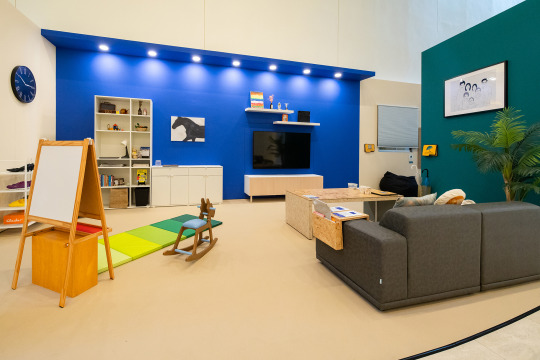

This exhibition was an eye-opener, revealing the large amount of plastic waste generated in our daily lives. Although it might not be one of the most aesthetically beautiful exhibitions or an exhibition with a lot of historical background and depth. It was one of the most meaningful and well-made exhibition that taught me about plastic consumption and how to reduce its wastage, making it one of the most impactful experiences in the museum.
The fourth point of interest is rattan baskets in the Singapore History Gallery.

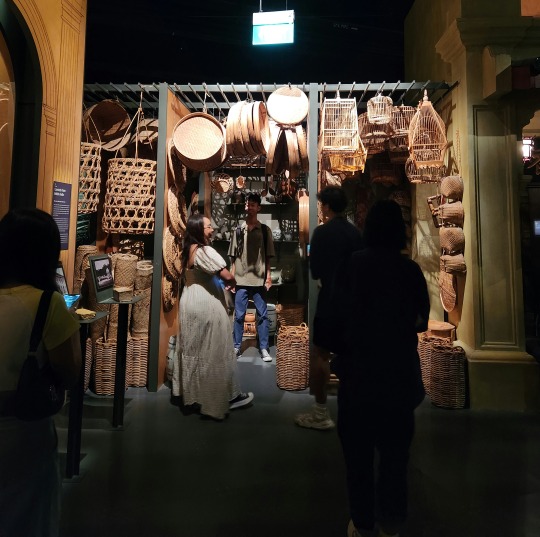


The fifth point of interest is Javanese-style gold jewellery. where it was discovered at Bukit Larangan (Fort Canning Hill).

This particular artefact suggests that there could have been a kingdom of Singapura back in the days as part of the Malay Archipelago which is really interesting as it allows the public to think about how Singapore came to be founded.
This field trip gave me a deeper understanding of Singapore's history and the cultural significance of the artefacts on display. Moreover, witnessing the collaboration between Singapore and international artists showcased the innovative use of technology to enhance the museum experience for visitors worldwide. Lastly, while the exhibitions may appear simplistic at first glance, delving deeper reveals a wealth of knowledge waiting to be explored and appreciated.
~ 327 words
Wings of a rich manoeuvre. Suzann Victor. (n.d.). https://suzannvictor.com/artwork/wings-of-a-rich-manoeuvre/
Film, T. (2023, October 28). Wings of a rich manoeuvre - suzann victor. Vimeo. https://vimeo.com/195406956
Board, N. H. (n.d.). National Museum of Singapore - About Us. National Heritage Board - Pride in our Past, Legacy for our Future. https://www.nhb.gov.sg/nationalmuseum/whats-on/exhibition/story-of-the-forest
Story of the Forest. teamLab. (n.d.). https://www.teamlab.art/w/story-of-the-forest/
The story of the Forest. ROOTS. (n.d.). https://www.roots.gov.sg/stories-landing/stories/the-story-of-the-forest/story
Board, N. H. (n.d.). National Museum of Singapore - About Us. National Heritage Board - Pride in our Past, Legacy for our Future. https://www.nhb.gov.sg/nationalmuseum/whats-on/exhibition/plastic---remaking-our-world
Plastic: Remaking Our World. National Heritage Board - Pride in our Past, Legacy for our Future. (n.d.). https://www.nhb.gov.sg/nationalmuseum/plastic-ebrochure/html5/index.html?pn=16
Silver epergne presented to William Farquhar, Singapore and England, 1824, silver. ROOTS. (n.d.). https://www.roots.gov.sg/stories-landing/stories/the-singapore-story-through-60-objects/colonial/silver-epergne/story
Javanese style gold jewellery discovered at Bukit Larangan (fort canning hill), also known as the “Majapahit gold”, Singapore, 14th century. ROOTS. (n.d.-a). https://www.roots.gov.sg/stories-landing/stories/the-singapore-story-through-60-objects/networks-through-time/majapahit-gold/story
Making of rattan products. ROOTS. (n.d.-b). https://www.roots.gov.sg/en/ich-landing/ich/making-of-rattan-products
0 notes
Text
The Indoor Rattan Furniture Trend Is Booming – Here’s Why
natural rattan, the weight is spread evenly across the entire surface, allowing for greater durability and comfort.
Indoor rattan furniture is seeing a huge rise in popularity over the last few years and is it any wonder?
Often crafted by skilled artisans, this tree-climbing vine is surging in demand due to its durability and eco-friendly nature. Retailers and manufacturers alike are becoming ever more creative with the material, crafting exquisite designs in forms and structures not possible if made from…

View On WordPress
#afforadable art#china embassy#rattan#Rattan Australia#rattan ideas#rattan natural#rattan singapore#scandinavian embassy#sentosa#Singapore embassy#Singapore expats
0 notes
Text
[ad_1]
Rani Gharbie is aware of a factor or two concerning the hospitality market.
The managing director of funding and growth for CitizenM Resorts, Gharbie is a veteran of Virgin Resorts, IHG and Hyatt, and he teaches non-public fairness resort growth at Columbia College’s Graduate Faculty of Structure, Planning and Preservation.
In his roles throughout the business, he has picked up a world view of hospitality, and the methods to make developments pencil in a variety of markets.
His newest problem, serving to a Dutch firm develop throughout Europe and america, comes at a time of uncertainty in American hospitality markets. The pandemic upended norms of enterprise journey, vacationing and repair, whereas splitting many American cities into haves and have-nots.
CitizenM’s latest resort, situated at 617 Colorado Road in downtown Austin, is the agency’s first in Texas and a guess on its mannequin of constructing simply replicable resort rooms with an emphasis on the communal area outdoors the room.
Seated on a settee within the funky-futuristic “front room” of the brand new resort, Gharbie mentioned the group’s growth into Texas, the fractured hospitality market restoration, and why CitizenM is betting large on Austin.
This dialog has been flippantly edited for size and readability.
How are you taking a look at progress right now of frozen growth pipelines and uncertainty in monetary markets?
CitizenM is a Dutch firm conceived about 15 years in the past. So it went from being funded by the household workplace to extra of an institutional-backed entity over its evolution. Proper now, our backers are two establishments and one household workplace [Rattan Chadha’s KRC Capital]. The 2 establishments are GIC, which is near a trillion-dollar sovereign wealth fund out of Singapore. and APG, one of many largest pension funds in Europe.
We name ourselves a one-trick pony, as a result of we've one idea that's extraordinarily worthwhile per-square-foot, and has nice retention of workers. We love to copy that in markets the place we predict we will even have the appropriate demand for it. And we like to comply with the hub-and-spoke mannequin, which is after we go right into a marketplace for one property, after which add a second, add a 3rd, add a fourth.
We’re not in a rush to do offers only for the sake of doing offers. We might hypothetically pause for a 12 months, 12 months and a half, or decelerate till we get a bit of bit extra conviction from both the availability and demand perspective, or interest-rate perspective, labor, working prices generally, and anticipate the appropriate offers to return by and broaden once more. So what we’ve realized over the previous few years is that there's [opportunity for] arbitrage.
There are markets that benefitted from Covid, and there are markets that didn't. So these are conversations that we’re having now, as a result of throughout this era of uncertainty and volatility, these markets [like Austin, Denver and San Diego] occurred to provide us a bit of extra certainty than different markets that had issue recovering from Covid.
Inform me extra about that resort idea that you could replicate from metropolis to metropolis.
The rooms are actual replicas of one another, all around the world. King dimension beds, about 165 sq. ft. Tremendous well-designed tech, and never in a gimmicky means. And that mannequin is replicable. What isn't replicable is the work that goes into the artwork. If I blindfolded you and put you in any CitizenM world wide, from Copenhagen to Paris, you'll know your location, little question.
Should you have a look at the artwork, it’s very localized, very extremely curated, very costly. And once I’m saying that, it hurts — I’m on the true property funding facet, so I need these prices to be down! However I perceive the profit to the enterprise, and to the expertise, and the sense of arrival.
As you broaden into Texas, why did you go together with Austin as an alternative of Dallas or Houston?
The best way we method progress generally is that we've a matrix of parameters that we use to outline what markets we wish to go to, whether or not it’s greenback deployment, kind of demand, kind of firms. Our visitors match inside that market, or have demand for that particular market.
Now we have 15 or so cities that we wish to be in within the U.S., and Austin is only one of them. The economics of this metropolis match our targets, extra so than another metropolis in Texas. Now issues are altering. This was conceived in 2018 and 2019, so the economics made sense of getting a resort like ours right here. It was the appropriate match.
I used to be trying on the underwriting that we did 5 years in the past and in contrast it to the marketing strategy that we put out final quarter, they usually had been actually shut. My interpretation of [demand] is that there was an enormous dip, due to the oversupply available in the market since 2019, however that in all probability is being absorbed, no less than in our underwriting over the subsequent 10 years. Since there was such an enormous provide, there was in all probability an absence of latest offers for the previous two years, as a result of lenders and builders thought, “Perhaps that market is just too sizzling or too bloated from a provide perspective.”
We expect that's permitting the oversupply to be absorbed, after which there’ll be a normalization of provide and demand sooner or later.
What particularly about Austin match the CitizenM parameters?
You've gotten a good steadiness of leisure and enterprise. From a resort perspective, that means that you can replenish your weekdays and weekends. There’s been a rise of provide of about 10,000 rooms since 2019, versus the 50,000 room stock. That’s 20 p.c. However that’s additionally over 5 years, in order that’s about 4 p.c a 12 months, which isn't catastrophic.
We additionally have a look at the place this provide and demand dynamic goes sooner or later, and Austin has a couple of issues going for it. One is the renovation of the conference heart — that’s enormous, and it’s going to spice up occasion demand. There's Formulation One, and the airport growth, and the companies which might be shifting right here.
All the basics of leisure and firms appear to be strong. And there’s a concentrate on them persevering with to develop sooner or later. That’s the appropriate market we wish to be in.
Learn extra
[ad_2]
Supply hyperlink
0 notes
Text
Rattan Chairs in Singapore: Your Ultimate Shopping Guide for Style and Comfort
Explore the world of rattan chairs in Singapore with our top tips for a stylish and comfortable seating experience. From design trends to durability, our comprehensive guide ensures you make the perfect choice. Elevate your space with the best rattan chairs – discover expert advice and shopping tips here.
0 notes
Text
How To Choose the Best Dining Table Set in Singapore for Your Home?
Your dining room is more than simply a place to eat; it's also a place to socialize with the rest of the family while enjoying a delicious dinner together. The dining room is one of the most important spaces of a home where family bonds are formed and where one may stay physically fit by eating. To establish a pleasant eating environment, the dining space must emanate a positive vibe. Even tones and atmosphere are thought to have a considerable influence on one's state of hunger. Taking everything into account, that may be true. You can get the perfect dining table at the dining table set singapore.
A great dining set is an essential component of a nice feast. Do you think your dining room set is ideal for your home? If not, are you considering about improving the set? Alternatively, you may be a new homeowner in need of a few items to stock your dining space. This indicates that you are presently looking for a suitable dining set. The tips presented here will assist you in selecting the ideal dining set for your home.
Create a spending strategy and stick to it.
For your eating set, you would actually have endless options. Setting up a financial plan will therefore greatly aid you in choosing one. In the unlikely event that you have no clue what budget you would set aside for an eating set, you could be persuaded to buy an expensive set. From now on, you must create and stick to a budget. It is crucial that you stay within your spending limits so that you may still buy other things you desire.
2. Know your customers
The quantity of people who will use the feasting table is one thing you should truly know. You may use this to help you determine how many chairs you'll need. If you often invite guests, you may, if necessary, add a few more chairs. Or alternatively, if you enjoy hosting large gatherings, you might choose a dining table with a folded leaf.
3. Choose the proper form
Different forms of feasting tables exist. Oval, round, square, and rectangular shapes are typical. The condition of your dining table is important, and it will also depend on how many seats you need and how much room you have in your dining area. Make sure you also wish to converse politely with others in the dining area when you are sharing a meal.
4. Understand your personal taste
You have already decided how your interior will look before you start making improvements. In light of this, use this as a guide when choosing a dining set. If your interior is modern, you might choose a dining set with slick lines and possibly a black or white shade. If you want a piece of art or a Victorian aesthetic, a feasting set with enhancing carvings and moldings would be appropriate.
5. Identify your preferred materials
A variety of materials are also used in eating utensils. You may choose a wooden dining set that will naturally fit into any interior design scheme. As well as varied materials, there are others like rattan, steel, and iron. Consider your interior plan when you choose the materials.
6. Verify if it is solid
It must be strong in addition to being acceptable and artistically captivating. Check to see if the table is level by attempting to incline it. When anything is pressed on it, it should not sway. If other objects are placed on top of it, it shouldn't shake since spilled food would result as a result. Check your table, especially if the top is made of glass.
Choosing a dining set may seem simple at first, but as you try to go deeper into your considerations, you will realize that you must look into all of the angles to make sure you choose the best dining set.
0 notes
Text
| shop for furniture |
My biggest passions of all. So glad our apartment is partly furnished, otherwise I'd keep on spending half of the family income for the new pieces.
Most of the shops have home accessories, homewares and decorations, but I'll do a separate post on this little nice (un)necessary things.
soul & tables - multibrand shop with selected high quality and timeless items. All the wood is natural and has fantastic velvet-like textures, upholstery is great as well. Staff is friendly and the service in the shops and online is very good. What's not friendly are prices and it's barely affordable to furnish the whole apartment with this shop, but it's great if you're looking for a statement piece or for something you know you'll use a lot. Showroom in Tan Boon Liat, more info on it in the end.
island living - that's how I imagined my life in Singapore before moving - rattan, airy daybeds, reclaimed wood and concrete, consoles to show off beautiful antique pieces... Needless to say my life did not turn out like this, but you still can try ) Love the furniture and the styling.
Castlery - very nice timeless pieces, full range of what you might need for a new apartment. Natural materials and color palette, expensive and relaxed Hampton look and feel with ok prices. Showroom at Orchard.
Originals - Singapore based, old and new furniture, natural materials only, colonial and japandi. Very beautiful, very expensive, but that’s what you expect from leather, wood and restored vintage Indian cabinets.
Kave Home - Spanish brand that gone international. Not cheap, but the quality and the designs are great. Again it's probably the place for the statement pieces, so use it to treat yourself and stroll around the showroom at Raffles City.
Rooma - handmade rattan and wooden furniture, all the asian vibe you've been looking for. All furniture is customisable and they are mostly focused on creating of custom pieces, therefore you'll not really find anything in the online shop. At the same time they have several outlets in the Tan Boon Liat building. Affordable + you can get something truly unique from the available pieces or create your own.
HipVan - Ikea for those who are bored with Ikea ) you can get all you need in one shop with affordable prices. Love the variety of mid-century styles Quality depends and I would recommend to avoid big "wooden" pieces like chest of drawers because it likely to be quite obviously printed texture. Good thing is that there's a showroom at Suntec so you can check it before buying.
IKEA - I mean, you know Ikea, what do you want to read here? It's predictable, it's affordable, it's the chance to have the same items you had at home, you friends have at their homes and you had at that Airbnb in any country. What I'd like to highlight is that it's really one of the cheapest options with the predictable quality. Trolleys for example will be cheaper and better than any Lazada ones, mattresses are great and cheapest as well.
fortytwo - the largest online furniture shop with probably forty two million items. Singapore based, reasonably priced. If you do not get overwhelmed with scrolling for hours and ok not to see/touch furniture before buying - it might be your first choice.
Hock Siong - pre-loved furniture, decor and all the possible home items. Instagram is fun and being updated with the new pieces all the time.
Tan Boon Liat - it's a huge 15 story furniture shop with plenty of boutiques and showrooms in one place. In general it's focused on natural materials, colonial and luxury designs so don't expect a lot of cost-saving options, but it's a chance to visit several brands at ones and get inspired by the interior stylings as well. The building itself is a part of the adventure - the view from the upper floors is great (and a bit scary) and all the shop doors are from the outside balconies (fancy!). Make sure to get water, snacks and hiking shoes - this one will take few hours to investigate.
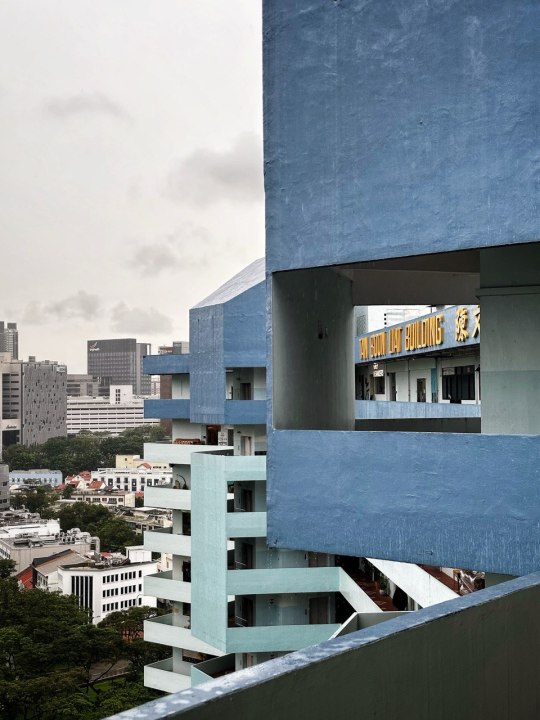
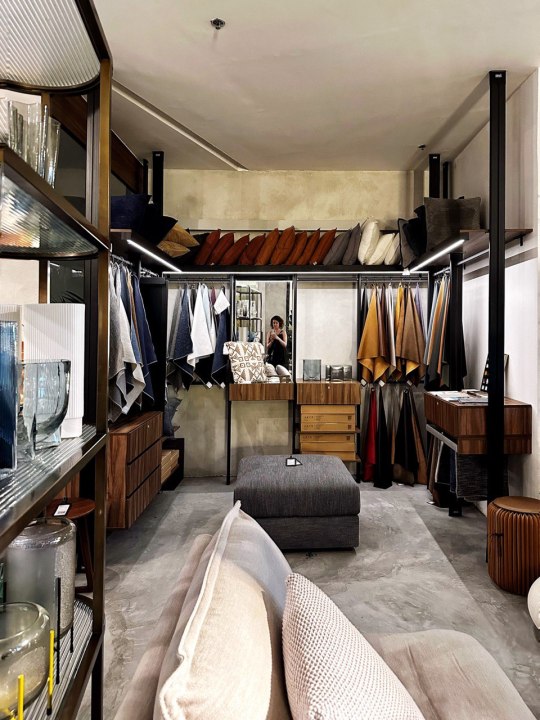
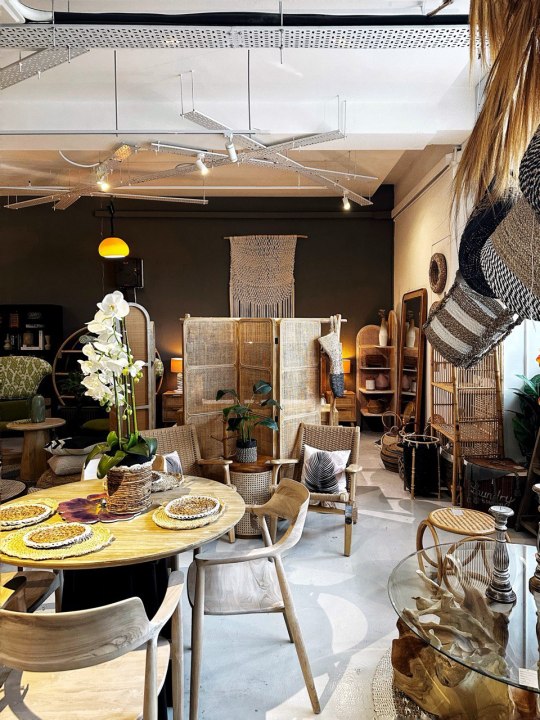
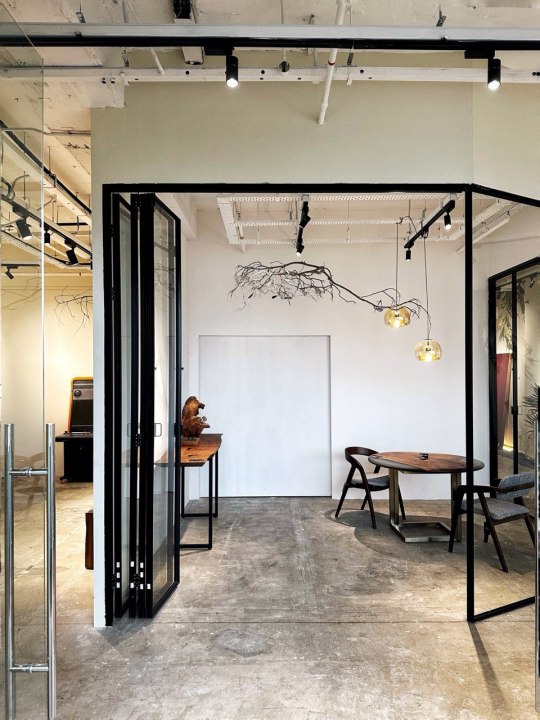
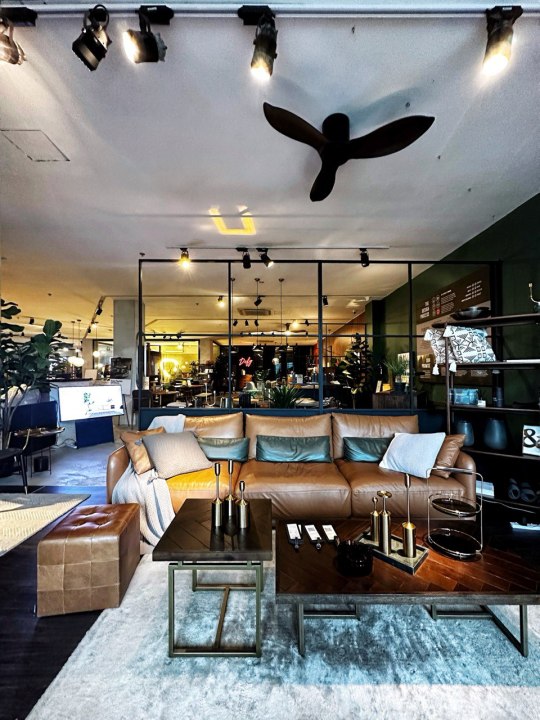

1 note
·
View note
Text
Tropical Wallpaper Motifs Invading Singapore Homes
The tropical climate makes botanical and nature wallpapers (https://is.gd/LD9S9m) a top choice. Stylish designs featuring palm leaves, ferns, hibiscus, orchids and other plants native to Southeast Asia are hot. Vibrant floral patterns in greens, blues and sunny yellows evoke the outdoors. They blend beautifully with rattan and woven furnishings. Exotic animal prints featuring tigers, monkeys and parrots in jungle settings bring playful vibes. Great for kids' rooms. Layer greenery wallpaper with framed art of Singapore landmarks for a homegrown look.
0 notes
Text
Week 3: This Is How You Connect Practise With Society: Can I be a social agent if I am an artist/ designer?
What is social agent? According to"IGI GLOBAL”,Social agent is an agent that interacts with other agents (and humans) by communication. Can I be a social agent if I am an artist/ designer? Yes. As a designer and artist, it is important to use our style and our voice to engage in society. In today’s lecture, we looked at some examples of artists and designers using their own style to communicate an issue in today’s society. An example is Verboom’s Fan Lamps. He uses the second-hand lamp with traditional natural rattan hand-weaving techniques by local craftsmen to form an original table and hanging lamps. The idea behind this product is to counter the large waste problem in Cebu, Philippines.

For our activity, we need to form a group of four to make a documentary about the social issue that we think is important. Our group decided to solve the gum problem in Singapore, because we realised that a lot of foreigners didn’t know that chewing gum or selling gum are illegal in Singapore when they first came, so this documentary is to help the foreigners understand the laws and restrictions in Singapore, and prevent them from doing illegal acts and get punished. Our team collaborates well in this project, because everyone have a role and everyone is so active throwing their thoughts into the documentary. What I will do differently next time is to indicate the word “gum” in the beginning of the documentary, because after watching our video, the lecturer didn’t really know that we were talking about gum restriction, he thought our documentary was about “drugs”.
How this topic can help with my future design is that I can incorporate more social issues in my works, to use my own voice to speak out for those who need help, and I can also use my own voice to make people aware of the serious issues happening in the society. For example, for my final project, I can do something related to anti war.
What Is Social Agent | IGI Global. www.igi-global.com/dictionary/social-agent/27265#:~:text=Social%20agent%20is%20an%20agent,Science%20and%20Technology%2C%20Second%20Edition.
(336)
0 notes